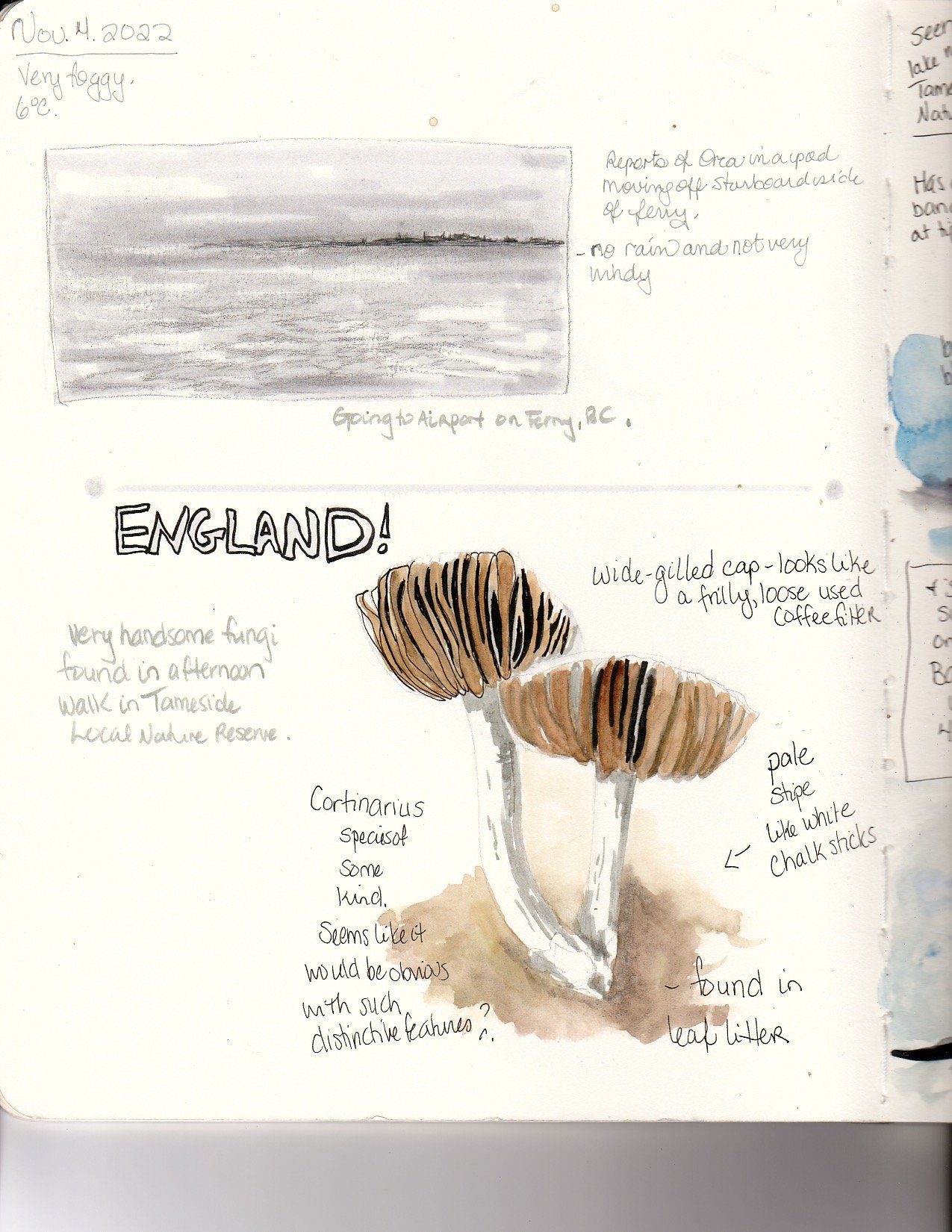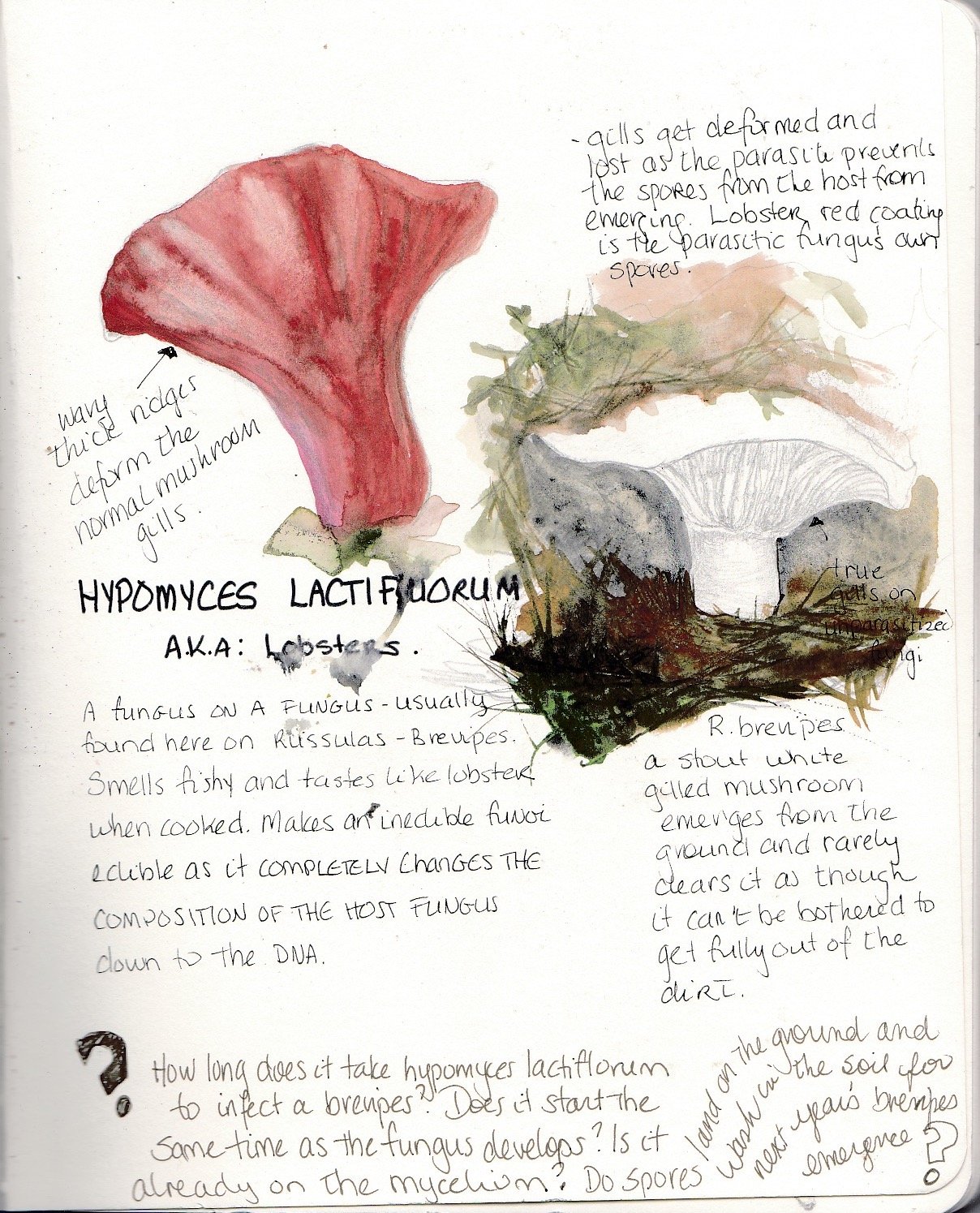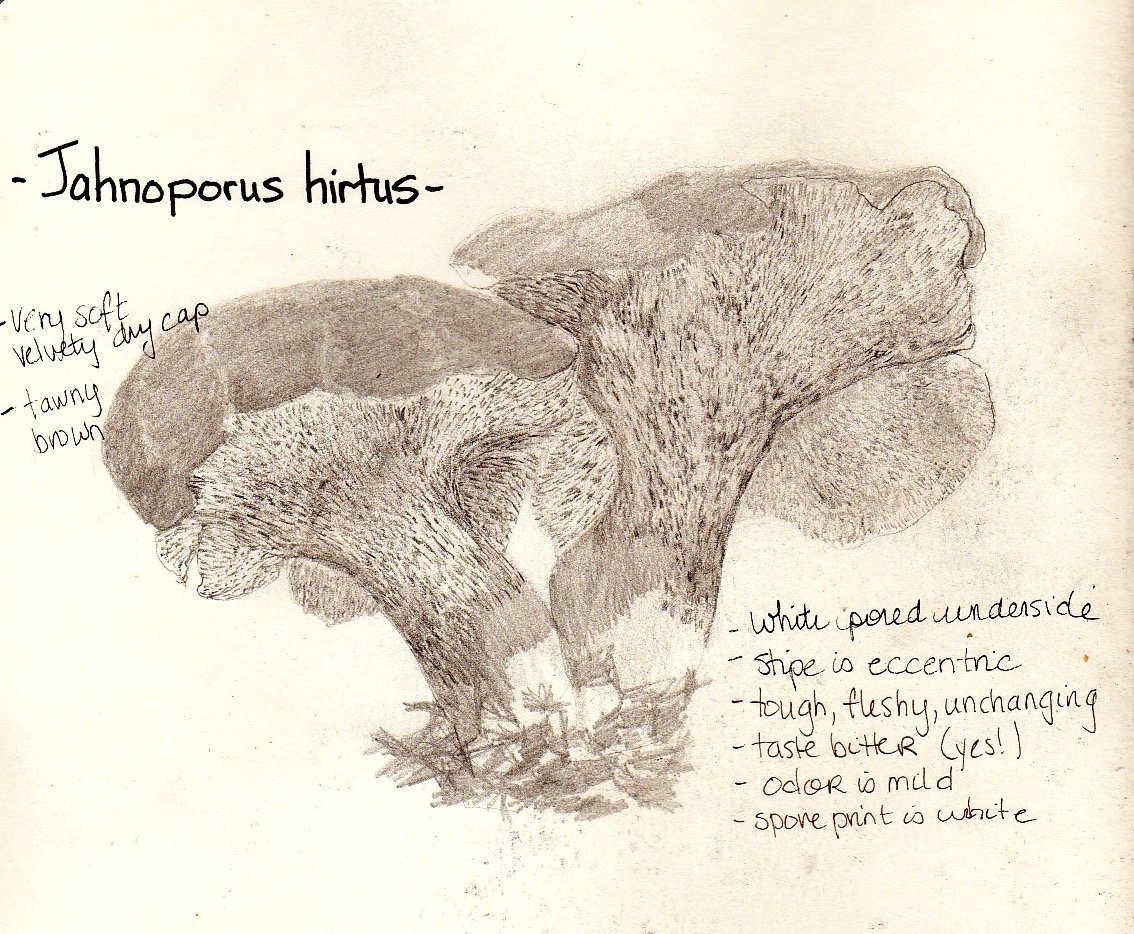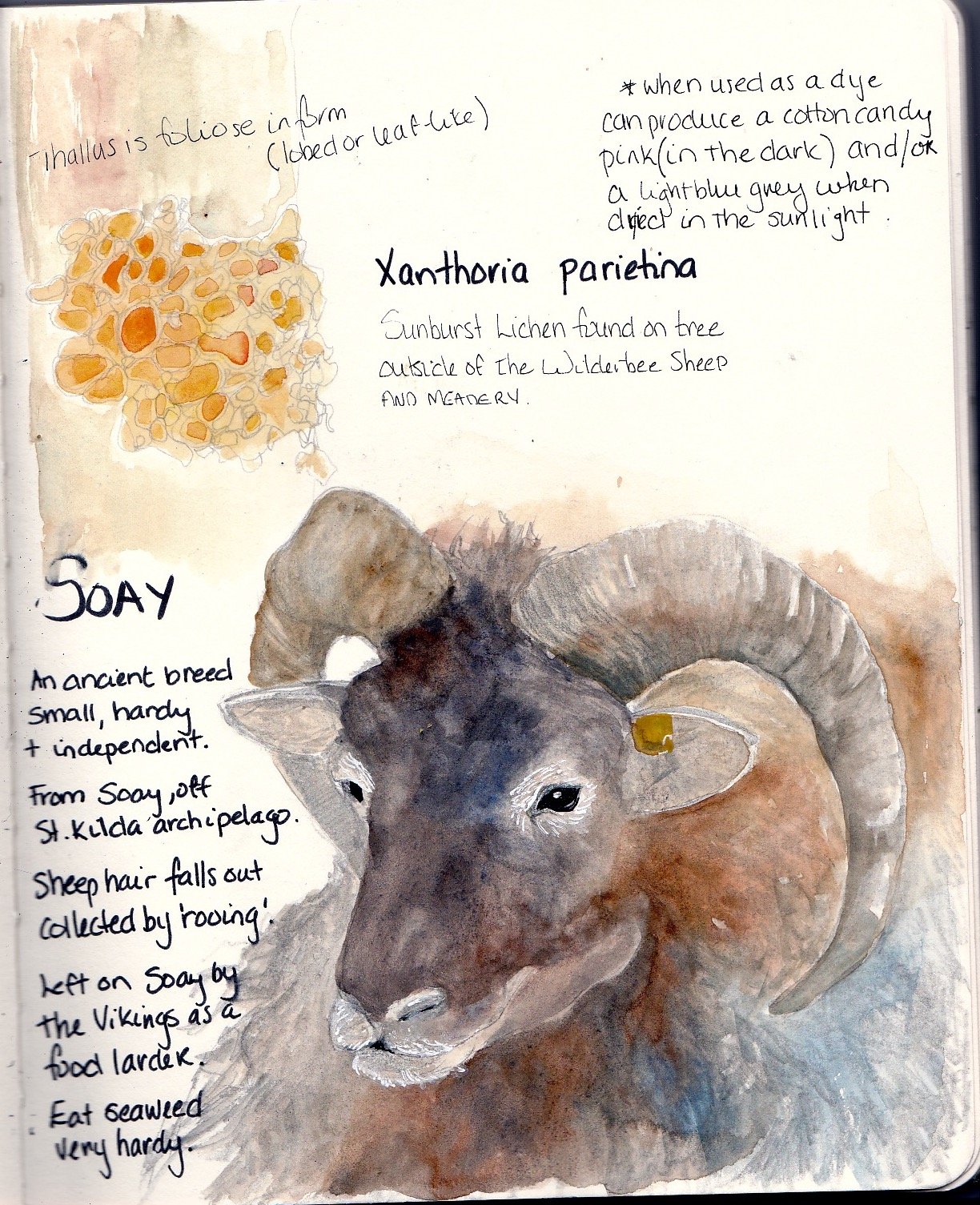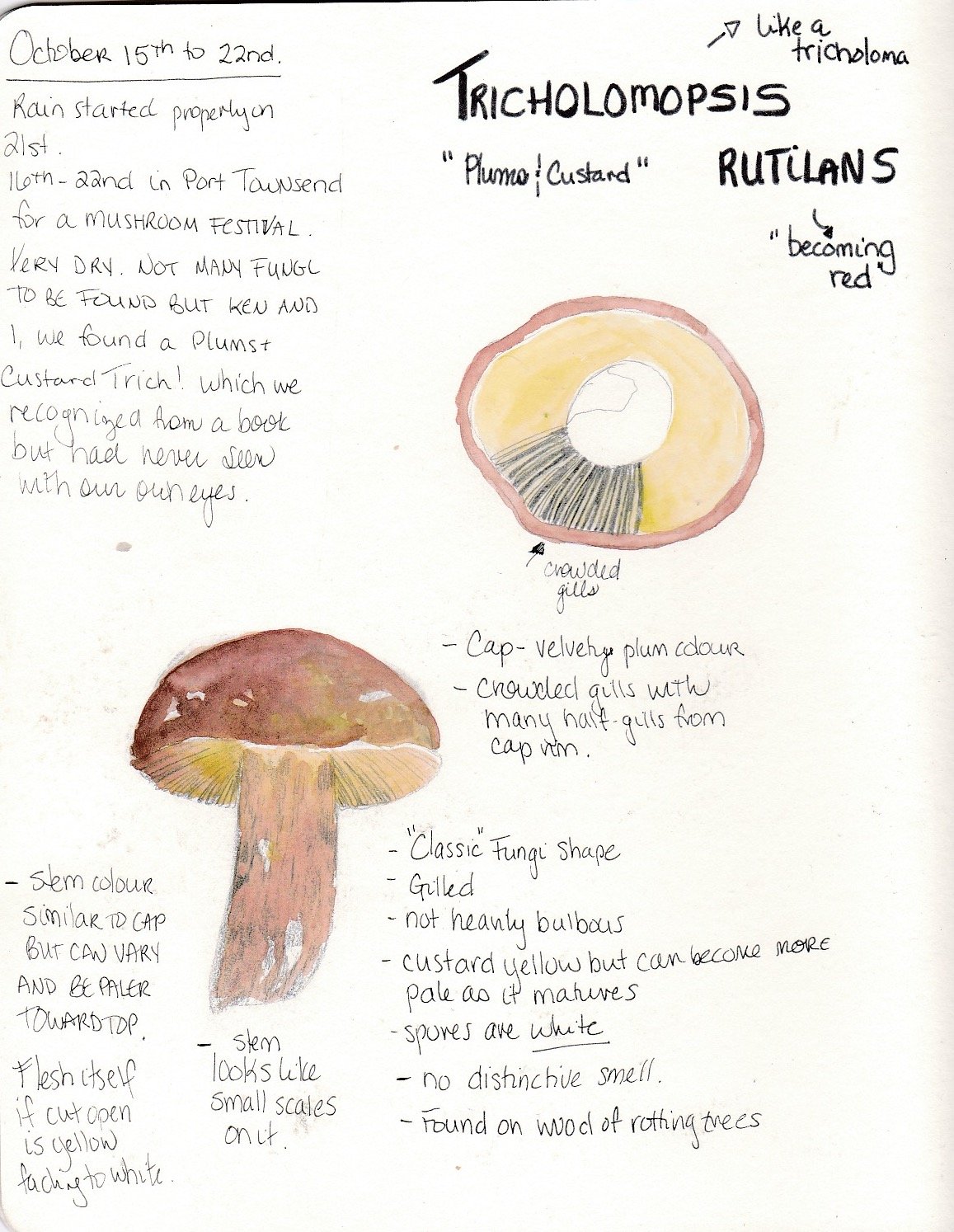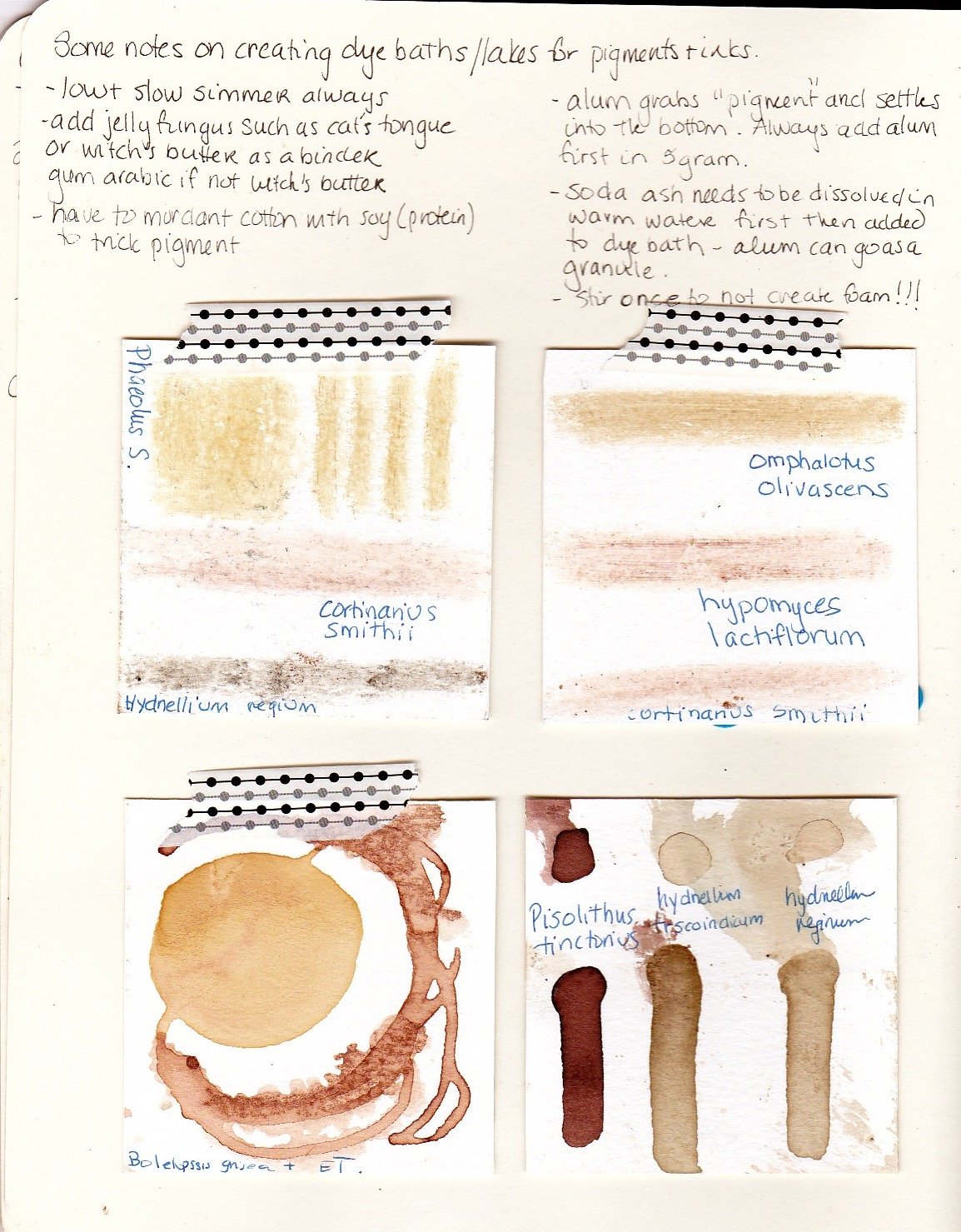Trying out the “Rite in the Rain” paper. I really quite like it.
Volvopluteus gloiocephalus
Informal Mushroom Foray in the UK
well… all my forays are informal….
My first UK fungi!
I hope someone identifies it on iNaturalist. I am keen to know what this beauty is.
Lobster mushrooms...
Jahnoporus hirtus
This is a very sturdy fruiting body. It does indeed feel tough, like the guidebook says, and even after weeks, it keeps its form and shape, without going mushy or disintegrating. We only saw one last year in the area, but maybe this is the year for Jahnoporus hirtus because I think we have seen three now; one very much eaten.
International Fungi and Fibre Symposium
International Fungi and Fibre Symposium
International Fungi and Fibre Symposium… yes… all things fungi! It was five days of workshops and fun: cooking with fungi, dying, weaving, forays and forages, making felted hats, marbling paper with fungi that fluoresces under a blue light, and botanical dying silk scarves to name a few of the classes offered.
So why the sheep? Well, it is also about the fibre arts and one can’t pass over going to a meadery and farm to see these wonderful sheep. Soay sheep are an ancient breed and some farmers are taking pains to keep that lineage thriving. From the Wilderbee website:
Soay are the UK's oldest surviving livestock breed. They are designated At Risk, meaning there are less than 1500 known breeding ewes in the world. Breeders register sheep with the UK's Rare Breed Survival Trust (RBST), and genetics are recorded in an extensive database.
Unfortunately, we had a very dry season here in the Pacific Northwest (not as horrific as the Heat Dome of last summer, but yes, months without rain) and there were few fungi to be found. I did find this Plums and Custard fungi which was a first for me and which I had only read about in field guides. So that was a very nice forest surprise.


